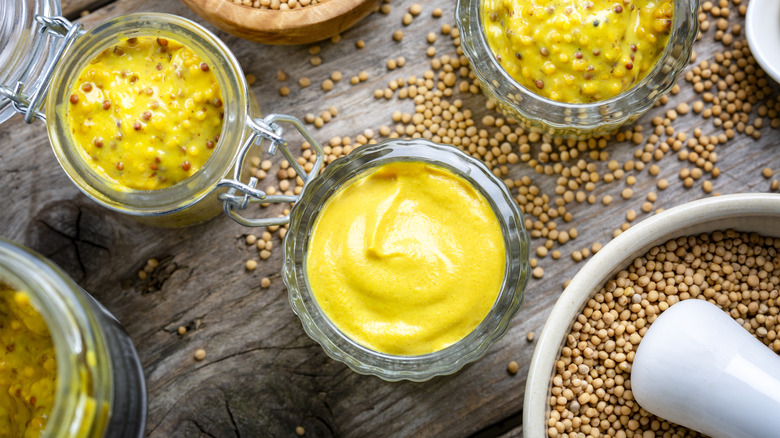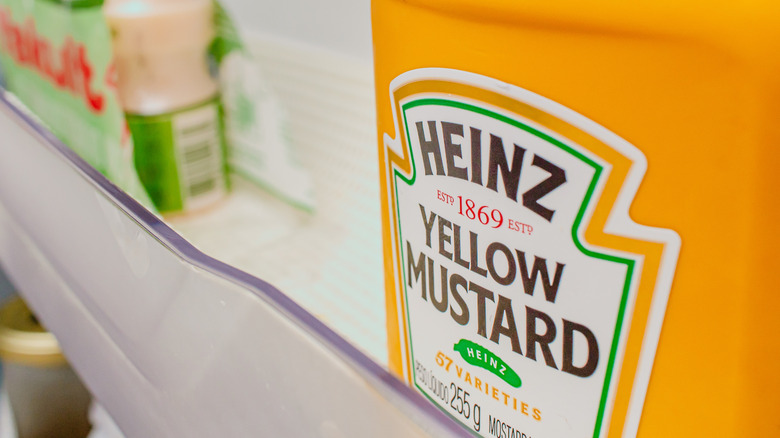The Tell-Tale Signs Your Mustard Has Gone Bad
We may receive a commission on purchases made from links.
Mustard is as versatile as it is tasty. It's surprisingly good on watermelon and also a great steak marinade base (and a required hot dog topping, to boot). It's also a long-lived condiment, with most varieties lasting upwards of a year in the fridge, thanks to the ingredients that go into it, like vinegar, salt, and the mustard seeds themselves. They create an acidic cocktail that is bacterially resistant, and storing mustard in the fridge helps slow the spoilage process, too. With its long shelf life both before and after being opened, though, it can be difficult to tell if your mustard has gone bad.
One of the major indicators that your mustard has degraded enough in quality to be considered "bad" is the smell. While mustards do have a zingy, piquant scent to them, once that turns into a sour or even rancid odor, it likely means your bottle or jar has been hanging around your fridge for a bit too long and should go into the trash. Other signs include a darkening in the color of the mustard, a newly clumpy texture to it, an exceptionally harsh or tart flavor, or even the appearance of mold.
Use and storage best practices to get the most out of your mustard
Despite its long shelf-life after being opened, human error can certainly speed up the spoilage process of mustard, so here are some actions to avoid. First up, not refrigerating your mustard. While technically mustard is shelf-stable, even after opening, refrigerating it will help preserve the subtleties of flavor and spice — basically, what makes mustard such a unique condiment. If you're using mustard in a jar, it's also important not to put dirty utensils into it — like a knife or spoon that's been in your mouth, as that can introduce new bacteria that may cause it to spoil.
It should also be kept in an airtight container, to prevent contamination as it sits in the fridge with other food items. Leave it in the bottle or jar it came in, but make sure to either snap or twist the lid back on tightly before returning it to the fridge. If the lid breaks or is faulty after opening it, transfer the mustard to a plastic or glass container with an airtight lid, like these flip-top condiment squeeze bottles from RAMFIYN.

